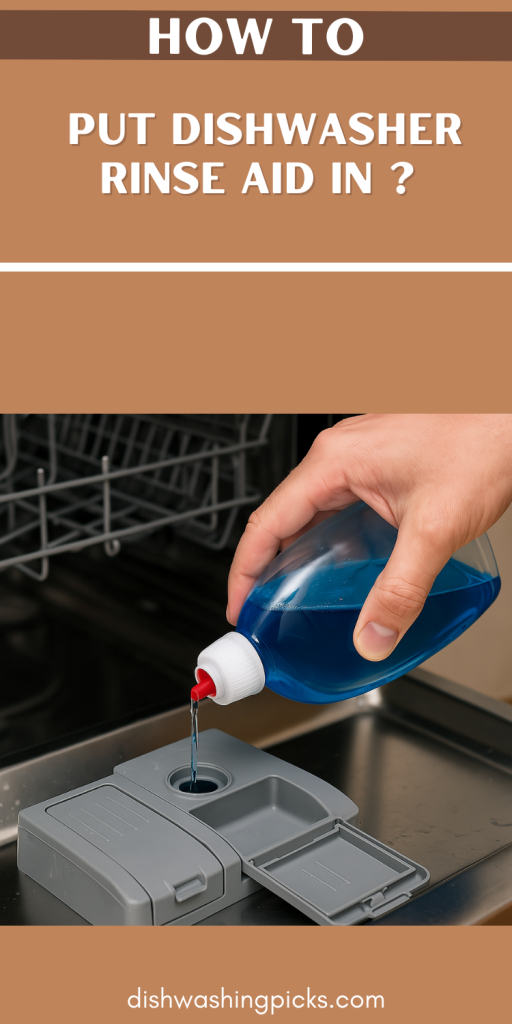
Okay, let’s be honest—most of us have stared at that little compartment labeled “rinse aid” and thought, “Do I need this? Am I doing this right? Will something explode if I mess it up?”
Spoiler alert: it’s way easier than it seems. And yes, rinse aid actually does make a difference.
So, if your glasses are coming out of the dishwasher with weird spots or your dishes aren’t drying all the way, this is for you. Let’s break it down together—no techy talk, no user manuals, just real-deal advice.
Wait… What Even Is Rinse Aid?
First up: what’s this stuff actually do? Is it like dish soap’s cousin? Kind of.
Rinse aid is that behind-the-scenes MVP that helps water slide right off your dishes during the rinse and drying phase. Without it, you might get those annoying water spots on your glasses or dishes that still feel kinda damp even after the drying cycle.
Not cute.
Think of rinse aid as the thing that makes your dishwasher feel like it really knows what it’s doing.
Where Do You Put Rinse Aid?
Alright, let’s get into the how-to—because this is the part where people go, “Wait… where does it even go?”
Totally fair question. Here’s the scoop:
- Pop open your dishwasher door.
You’re looking for a small cap or flap, usually on or near the inside of the door. It might even say “Rinse Aid” or have a little symbol that looks like a sparkle. (Fancy.) - Open the rinse aid compartment.
Twist the cap or lift the flap—whichever setup your dishwasher has. It’s kinda like opening a tiny treasure chest, except the treasure is spot-free dishes. - Pour in the rinse aid slowly.
Don’t just dump it in. Go slow, and stop when it hits the “max” line. Some compartments are see-through so you can tell when to stop. Others just overflow if you get too excited. Either way, no biggie. - Close the compartment.
Twist or snap it shut until it clicks. That’s it. You’re good to go.
Boom—done in like 30 seconds. And yes, it lasts for multiple cycles, so it’s not something you have to do every time you run the dishwasher.
“Do I Have to Use It Though?”
Okay, real talk—can you get away without rinse aid? Technically, yeah. Your dishwasher won’t break without it. But if you’re tired of drying dishes by hand or pulling out glasses that look like they’ve been through a rainstorm, it’s definitely worth it.
Also, most modern dishwashers are designed to work best with rinse aid. So if your dishes aren’t coming out perfect, this might be your missing piece.
Pro tip: if your water’s hard (you’ve got mineral buildup or cloudy glasses), rinse aid helps a lot. Like, game-changing level.
Is This a Must-Do or Just Extra?
Here’s the deal: adding rinse aid isn’t one of those “nice to have” extras. It’s more like the secret ingredient that makes your dishwasher actually finish the job.
You don’t need to refill it every time—usually once every couple of weeks is fine, depending on how often you run your dishwasher. Just keep an eye on the little indicator (some dishwashers even have a light for it), and top it up when it’s low.
So next time you open your dishwasher and think, “Ugh, why are these dishes still wet?” or “What’s with these streaks?” — just remember: rinse aid might be the fix you didn’t know you needed.
Need more dishwasher hacks? Wanna know if you’re loading yours all wrong? (Spoiler: you probably are. We all do it.) Stick around—we’ll talk all the dishwashing truths no one tells you.
